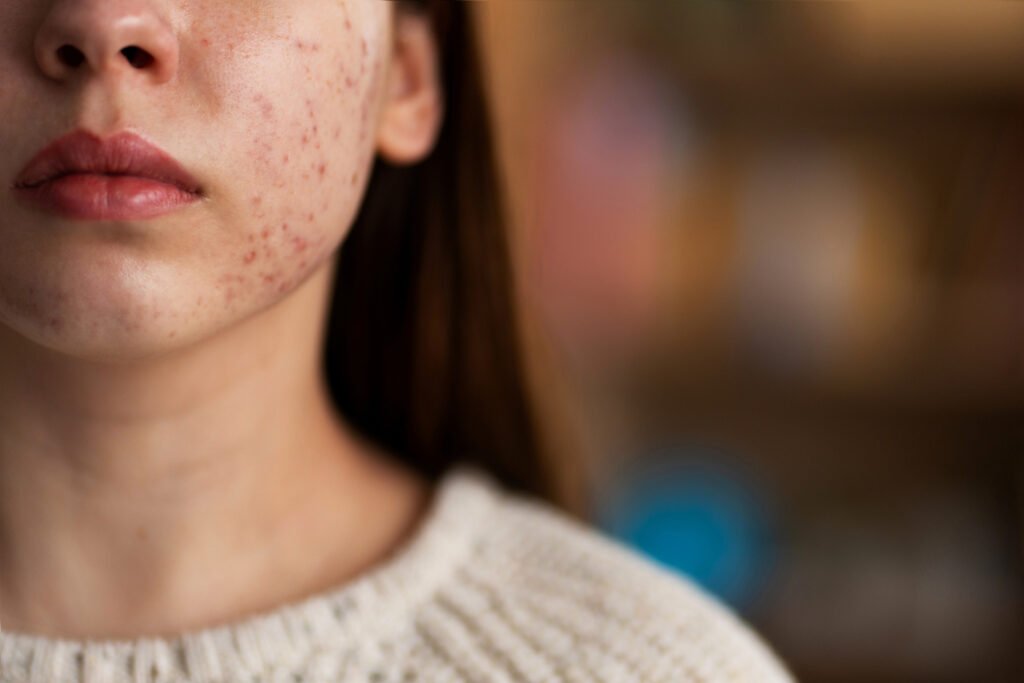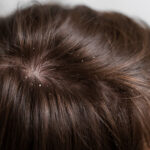
Acne is a common skin condition affecting over 50 million people in the United States each year. Among the various types of acne, cystic acne is the most severe form. Though less common, it can be incredibly painful and challenging to manage.
Causes of Cystic Acne
Cystic acne occurs when sebum, an oily substance that lubricates the skin, becomes trapped deep within hair follicles. This blockage results from a combination of bacteria, oil, and dead skin cells, leading to significant inflammation beneath the skin.
While anyone can develop cystic acne, it is more prevalent in individuals with oily skin, teenagers, women, and older adults experiencing hormonal imbalances. Key contributing factors include:
Hormonal Fluctuations
Hormonal changes can trigger cystic acne. Just before menstruation, a drop in estrogen and progesterone levels can cause the sebaceous glands to produce more sebum. During puberty, an increase in androgen levels can also boost oil production, leading to clogged pores and breakouts.
Genetic Factors
Genetics play a role in the likelihood of developing acne. Research indicates that there are 29 genetic variants commonly found in people with acne. Additionally, a family history of acne can predict the likelihood of breakouts in teenagers.
Diet
Consuming foods high in sugar or starch can lead to inflammation and activate oil glands, which can cause breakouts.
Stress
While stress does not directly cause acne, it can exacerbate existing conditions. Stress prompts the body to release cortisol and androgens, increasing sebum production. Stress may also slow the healing process, prolonging the presence of pimples.
Treatment for Cystic Acne
Treating cystic acne often requires consultation with a healthcare provider or dermatologist. They may suggest a combination of treatments, including medications, hormonal therapy, topical treatments, and corticosteroid injections.
Medications
- Isotretinoin (Accutane): This oral retinoid is used for severe or resistant acne. It works by shrinking oil glands, preventing clogged pores, and reducing bacteria and inflammation. About 85% of users see improvement within 4-6 months.
- Spironolactone (Aldactone): Traditionally a diuretic, it also helps manage hormonal imbalances that stimulate oil glands. Effective doses range from 50-100 mg per day, particularly for women with hormonal acne.
- Oral Antibiotics: These reduce acne-causing bacteria and inflammation but should be used short-term to avoid bacterial resistance and imbalance in skin and gut bacteria.
Hormonal Therapy
Combined oral contraceptives (COCs) can regulate hormone levels, reducing acne. They are often prescribed along with spironolactone.
Topical Treatments
Both over-the-counter (OTC) and prescription topical treatments can help manage cystic acne.
- OTC Topicals: Benzoyl peroxide lowers acne-causing bacteria and promotes peeling of the skin. Salicylic acid cleans pores of excess oil and dead skin cells.
- Prescription Topicals: Options include benzoyl peroxide, salicylic acid, dapsone, and retinoids like tretinoin. Retinoids promote skin cell turnover, allowing new cells to grow underneath.
Corticosteroid Injections
Dermatologists can inject a diluted corticosteroid directly into a cyst to reduce inflammation, swelling, and pain. This is particularly useful for cysts that do not respond to typical acne therapies but should be used sparingly to avoid skin thinning and scarring.
Prevention of Cystic Acne
Preventing cystic acne involves lifestyle, diet, and skincare changes.
- Minimize Stress: Alleviate stress through exercise, meditation, and other relaxation techniques.
- Practice Good Skincare: Wash your face daily with a cleanser containing benzoyl peroxide or salicylic acid. Use retinol or salicylic acid treatments, and choose non-comedogenic makeup products.
- Avoid Picking at Your Skin: Picking increases the risk of inflammation, infection, and scarring.
- Try Milk Alternatives: Dairy products can worsen acne due to hormones that increase oil production. Alternatives like almond, coconut, or oat milk are better options.
- Reduce Sugar Intake: High glycemic foods are linked to acne. A low-sugar diet can reduce inflammation and improve acne.
- Consider In-Office Treatments: Options like laser resurfacing, radiofrequency, chemical peels, and dermal fillers can treat textural acne scars. Certain lasers can also treat active acne.
Conclusion
Cystic acne is a severe and painful condition that requires a multifaceted approach for treatment and prevention. By understanding the causes and employing effective treatments and lifestyle changes, individuals can manage and reduce the impact of cystic acne. Consulting with healthcare professionals for personalized advice and treatment plans is crucial for achieving the best results
A Quick Review
Cystic acne is a severe and painful form of acne caused by deep blockages of oil, bacteria, and dead skin cells. Contributing factors include hormonal changes, genetics, diet, and stress. Treatments range from medications like isotretinoin and hormonal therapy to topical treatments and corticosteroid injections. Preventive measures include stress reduction, proper skincare, and dietary adjustments. Consulting a dermatologist for personalized treatment is crucial.











